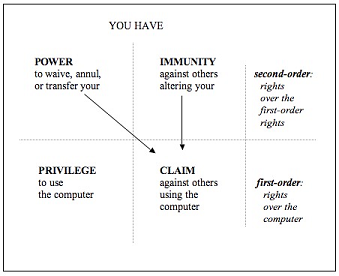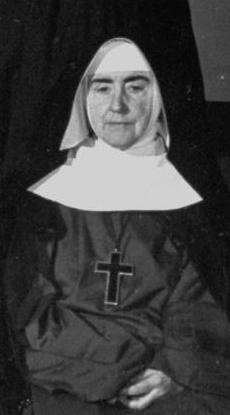Myths
& Metaphors of Private Law and Intellectual Property

"Patrimony
/ Patrimoine"
A Container, its Contents, and its Carrier
The image of the patrimony as a valise is an apt metaphor inasmuch as the vocation of the patrimony is to be a kind of container. What does it contain? A patent, a copyright, or a trademark  constitute patrimonial rights. There are, however, important elements of intellectual property that are regulated by provincial private law. These include ideas like goodwill, know-how, and trade secrets. These assets may have enormous value on the balance sheet of an enterprise. A famous example is the recipe for Coca-Cola, which remains a trade secret.
constitute patrimonial rights. There are, however, important elements of intellectual property that are regulated by provincial private law. These include ideas like goodwill, know-how, and trade secrets. These assets may have enormous value on the balance sheet of an enterprise. A famous example is the recipe for Coca-Cola, which remains a trade secret.
What do you have when you have a trade secret? You know something that others don’t. It’s not obviously a patrimonial asset, even though you might be able to sell it for a great deal of money. The patrimony is a universality of law. Its vocation is to contain legal relations, particularly rights; not to contain information, skills, or lists of customers. Of course, the sale of information, or know-how, or goodwill typically involves express or implied promises on the part of the seller, and these promises certainly create legal rights and obligations in the buyer and the seller.
But not every subjective right is necessarily a patrimonial right. I refer not only to the phenomenon of extrapatrimonial rights, which common lawyers might call “superstructural” rights (Peter Birks) or “general rights” (H.L.A. Hart). In the thesis of Aubry and Rau, some particular legal claims, which have a pecuniary value, were understood not as being in the patrimony, but as serving to protect the patrimony. The actio de in rem verso, on their view, serves to reconstitute a patrimony that has been unjustly diminished to the profit of another. It is not so much an element of the patrimony, as one of several prerogatives (facultés) that a person has over his own patrimony, in order to administer it.

This reference to prerogatives reminds us that not every legal relation is a right. The best-known analysis of legal relations in the common law tradition is Hohfeld’s Fundamental Legal Conceptions. Hohfeld analysed legal relations into rights (in the narrow sense, sometimes called claims or claim-rights), powers, privileges and immunities; and he argued that each of these has a jural opposite and each has a jural correlative. On Hohfeld’s scheme, any of these can be held for one’s own profit and benefit; in other words, can be found in one’s patrimony. For example, the person who owns a car has rights in relation to the car, but also a Hohfeldian power to transfer his rights to anyone else.
In the language of Franco-Quebec civil law, the idea of powers has developed quite differently. Right is typically opposed to power, not as different assets that one may have in one’s patrimony, but in the sense that rights are held as part of one’s own patrimonial wealth, whereas powers are held in relation to the patrimonial assets of others. In this sense, powers have something in common with the prerogatives of Aubry and Rau: they seem to lie outside the patrimony. On the other hand, some Hohfeldian powers are clearly held as part of one’s own patrimonial wealth and not for the benefit of others. The power to name one’s heir and the power to sell property over which one holds a hypothec are some examples. As in the day of Aubry and Rau, these are likely to be called faculties, rather than powers. As juristic relations, powers and faculties are similar: a faculty is not a right, in the sense that someone owes any corresponding obligation; rather, just like a power, it is an ability to alter existing juristic relations.
But there is a crucial difference between holding such a power for oneself, and holding it for  another, just as there is a crucial difference between holding a right for oneself, and holding it for another. The thesis of Aubry and Rau leaves little place for this possibility of selfless wealth. It was inspired by the pandectist school of 19th century German scholars, for whom a subjective right was, essentially, a protected space in which the right holder was lord and sovereign. This vision of the right incorporates, definitionally, an idea of liberty and a corresponding absence of accountability. In this view, of course, some people may choose to behave selflessly; but there is not necessarily a legal structure to take account of selflessness.
another, just as there is a crucial difference between holding a right for oneself, and holding it for another. The thesis of Aubry and Rau leaves little place for this possibility of selfless wealth. It was inspired by the pandectist school of 19th century German scholars, for whom a subjective right was, essentially, a protected space in which the right holder was lord and sovereign. This vision of the right incorporates, definitionally, an idea of liberty and a corresponding absence of accountability. In this view, of course, some people may choose to behave selflessly; but there is not necessarily a legal structure to take account of selflessness.
 The future of the patrimony may be to recognize that rights, powers and other jural relations—including their opposites, like obligations and liabilities—can be held for others just as they can be held for oneself. A patrimony may not be just a valise containing one’s own personal effects. It may be a charge, une charge, a load or a burden, carried selflessly on behalf of another, just as being the administrator of another’s property is a charge.
The future of the patrimony may be to recognize that rights, powers and other jural relations—including their opposites, like obligations and liabilities—can be held for others just as they can be held for oneself. A patrimony may not be just a valise containing one’s own personal effects. It may be a charge, une charge, a load or a burden, carried selflessly on behalf of another, just as being the administrator of another’s property is a charge.
Such a view gives the patrimony an existence that is potentially independent of the notion of legal personality, while providing a normative and conceptual framework for accountable selflessness.
Lionel Smith
Your
comments / Vos commentaires (1)
 The classic theory of the patrimony was devised and reinforced in 19th century France. A view of the political and social tensions throughout the century suggests that this legal context was very much preoccupied with selflessness, in particular how to prevent liberalities in a particular direction.
The classic theory of the patrimony was devised and reinforced in 19th century France. A view of the political and social tensions throughout the century suggests that this legal context was very much preoccupied with selflessness, in particular how to prevent liberalities in a particular direction.
There was a crucial fracture in French politics between supporters of a strong centralized state and the supporters of the Roman Catholic Church. At least after Napoleon, the succeeding governments and constitutions of France had uncertain legitimacy with large segments of the population. The Church’s burgeoning religious orders seemed particularly threatening to the State. Some owned newspapers or publishing enterprises; most were involved in various sorts of social service, including health and education.
Aside from cultural factors, the way the French economy developed favoured recruitment into religious orders, in particular those composed of women. Technical improvements in agriculture led to ever declining employment in the countryside. The instability of French society led to much of the available capital being invested abroad, and so to slower industrialisation than some of France’s neighbours.
Both working-class men and women faced declines in wages and increases in the cost of urban housing. There continued to be high rates of fertility, and rates of illegitimacy increased substantially. A life as part of a religious community could present an attractive alternative to a difficult marriage market or a meager single life.
A strict concept of the patrimony, and thus of legal personality, played a key role in the State’s efforts to slow growth of the religious institutions. A central legal site for this struggle was property holding, donations, and the transmission of property at death. Public order governed heirship and the question of what entities could receive property by gift. State authorised religious congregations and establishments were subject to detailed central control, in particular with respect to their acquisition and disposition of property.
The establishments of unauthorised congregations were given begrudging recognition as factual entities (so long as they were composed of less than twenty people), but the courts stood ready to strike down gratuitous transmissions of property to them. For example, the courts would characterise as a fidéicommis tacite a will that sought to leave property to a number of religious sisters as individuals, if the facts showed that the sisters were in reality persons interposed (the legacy was in reality meant to benefit the congregation or establishment).
A Marxist would also wonder whether it was a coincidence that C.S. Zacharie wrote the initial text which served as a base for the fathers of the classic conception of the patrimony, Aubry and Rau. Zacharie traced his family back to Huguenot Protestants who fled persecution in France at the end of the 17th century. He was in the service of a German state where the issue of the property of Roman Catholic establishments, and in particular the dividing-up of the land-holdings of monastic communities, was a sharp political issue for the first half of the 19th century.
Edmund Coates
constitute patrimonial rights. There are, however, important elements of intellectual property that are regulated by provincial private law. These include ideas like goodwill, know-how, and trade secrets. These assets may have enormous value on the balance sheet of an enterprise. A famous example is the recipe for Coca-Cola, which remains a trade secret.
another, just as there is a crucial difference between holding a right for oneself, and holding it for another. The thesis of Aubry and Rau leaves little place for this possibility of selfless wealth. It was inspired by the pandectist school of 19th century German scholars, for whom a subjective right was, essentially, a protected space in which the right holder was lord and sovereign. This vision of the right incorporates, definitionally, an idea of liberty and a corresponding absence of accountability. In this view, of course, some people may choose to behave selflessly; but there is not necessarily a legal structure to take account of selflessness.
The future of the patrimony may be to recognize that rights, powers and other jural relations—including their opposites, like obligations and liabilities—can be held for others just as they can be held for oneself. A patrimony may not be just a valise containing one’s own personal effects. It may be a charge, une charge, a load or a burden, carried selflessly on behalf of another, just as being the administrator of another’s property is a charge.
The classic theory of the patrimony was devised and reinforced in 19th century France. A view of the political and social tensions throughout the century suggests that this legal context was very much preoccupied with selflessness, in particular how to prevent liberalities in a particular direction.

